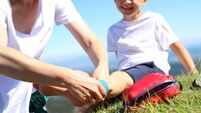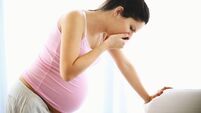When mother of two and 12 times All-Ireland water polo champion Mairéad Baker got pregnant, it never crossed her mind that it would be the end of her sporting life. “At what level I’d return, I didn’t know. But at 27, I knew I wasn’t finished with sport.”
Baker’s partner, Eoin, is also a water polo athlete. “I told him ‘I’m going back. I’m doing this thing for us for 40 weeks. It’s on you then to help me on the far side’.”
Baker, now 30, is mum to Seanán, almost three, and 22-month-old Nora-Rose. Until last June, she was a member of the Irish women’s national water polo team. Swim Ireland recently named her ‘Women’s Water Polo Player of the Year, 2023’.
“I’ve just left water polo to progress my business,” she says, referring to Thrive and Revive, a coaching service that “helps athletes and women thrive through pregnancy and revive postpartum in the world of exercise, sport and training”.
She’d “never say ‘never’ to going back to water polo”.
Doing CrossFit for nine years, she also coaches it and competes annually in the CrossFit Open worldwide championship. “Last year, I ran 16th in Ireland. I was named ‘fastest mom in Ireland’. There was nobody ahead of me on the leaders’ board who’d had kids.”
Head coach at CrossFit in Santry, Baker says women she met in the gym before she had her babies inspired her sense of possibility. “These women had babies the year or two before me and they made comebacks. I saw them progress beyond where they’d been before. So I thought there’s nothing stopping me, it’s about putting the work in. It spurred me to learn how to train during pregnancy to give myself the best chance of returning.”
She’s upfront about the toll pregnancy/childbirth takes on a woman’s body, describing it as a ‘trauma’. “Your hormones are all over the place. On top of that, there’s a tiny human needing all your care.”
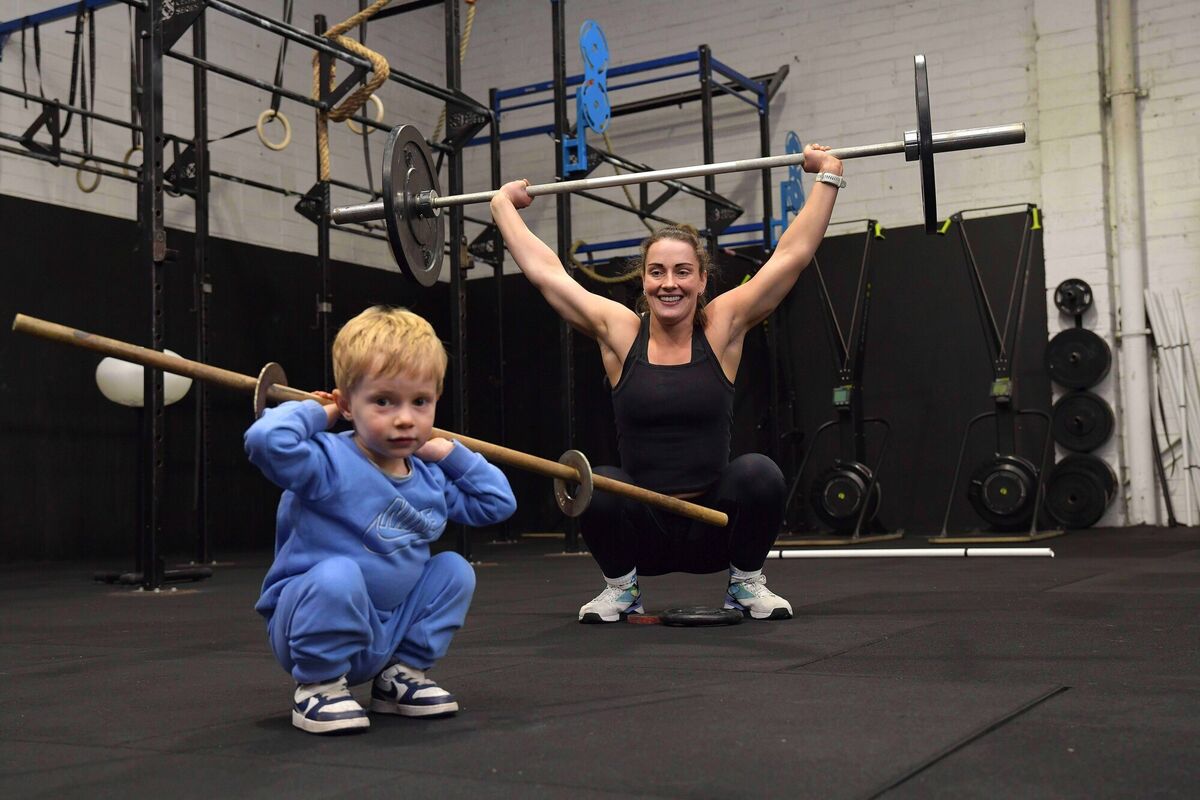
Exhausted after childbirth
Both her pregnancies were “really positive”, but she was physically and mentally exhausted after childbirth. “I thought: ‘If my body can walk again, I’ll be very grateful’. Then, ‘if I can run one mile, that’ll be fantastic, if I could do one body weight squat, how good that’d be’. So everything was a bonus after that. And it’s still a bonus. I’m 22 months postpartum. Knowing my body can do these ridiculously cool things — and I have the gift of two children — I feel very privileged.”
Five weeks after having Nora-Rose, Baker attended a pelvic health physiotherapist. “I said, ‘I know it’s mad, but hear me out’.” Her goal: to play in the Irish Senior Cup in May 2022. “She checked my pelvic floor healing. She checked my stomach muscles for diastasis. She talked me through exercises I’d have to do to strengthen these. I’m lucky my sport wasn’t load-bearing: It was in the water.
“It came down to education. I knew what I should be looking out for and how to train appropriately. I was able to safely train in the water and on land, so that I wasn’t adding any extra to my load.”
Her approach paid off, but it’s logistically harder now, being a high-performance athlete. “It’s not the same as before. My time isn’t my own. I have to get in and out of the gym; I can’t dilly-dally like before. But it’s still entirely possible.
“Eoin and I were athletes [before the babies]. Our families are used to supporting us. That support has changed now: Somebody has to mind the babies on the pool deck. Someone had to ensure I had somewhere to breastfeed. I breastfed Nora-Rose for 13 months.”
Baker says fear is what mainly stops postpartum women from returning to sport and training. “I meet many women who’ve had negative experiences. They tried training during pregnancy, but were put in the corner doing squats all day. Or the trainer ‘wasn’t qualified/insured’ to train women during pregnancy; or they didn’t account for the birth trauma a woman might have endured.”
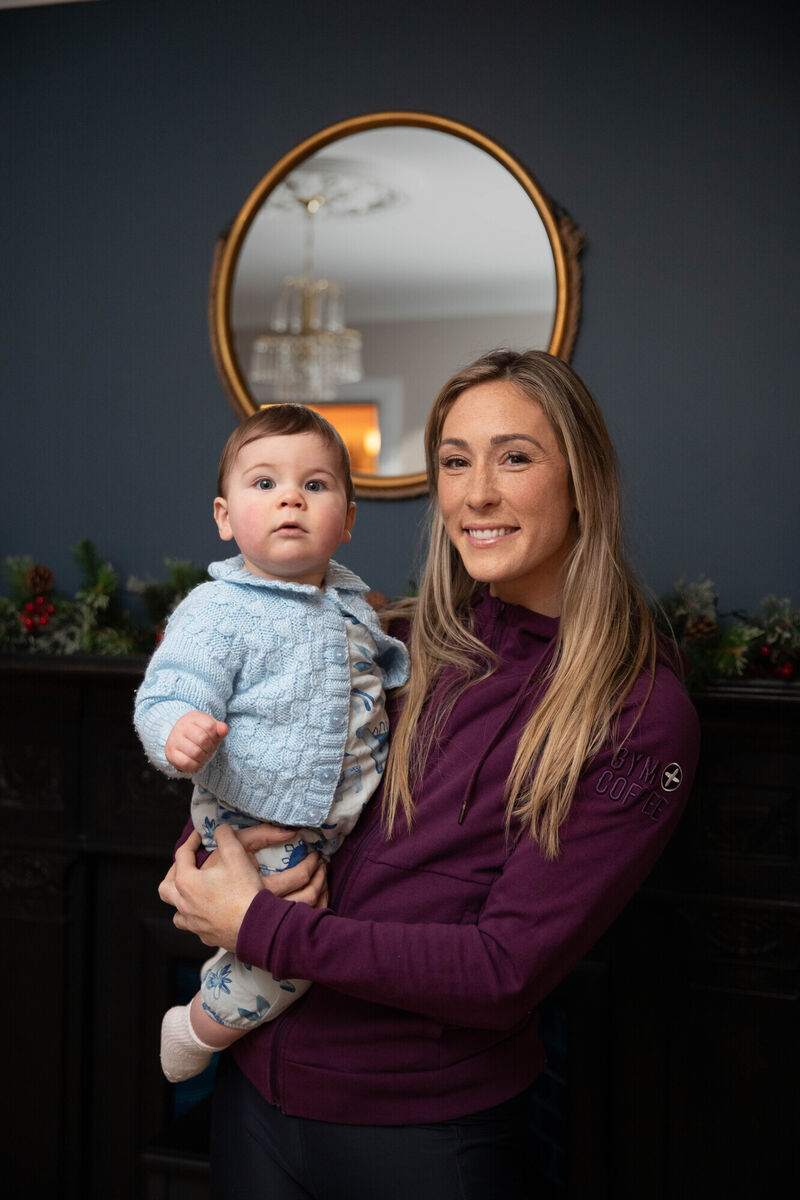
Exercise during pregnancy
Rugby star Eimear Considine has won 26 caps for Ireland and scored five international tries. She did research about returning to sport after having a baby, and she stayed fit during pregnancy. “I ran up to 25 weeks and lifted weights up to 33.”
Married to Dean Ryan, their son, Caolán, is one this month. “It was a massive goal to come back after childbirth, to prove I was still the same athlete I was prior to having Caolán. Dean and my family knew I wanted to get back. People who didn’t understand my sporting commitment said, ‘Isn’t it time you rose out of it now’.”
The 32-year-old Clare-based PE and Irish teacher didn’t have a personal trainer helping her return to sport. “My background in high performance meant I was able to judge and push my body according to how I felt. So it was very much me returning on my own. My core needed a lot of work. My speed had definitely depreciated; my acceleration was slow to start.
“I went for a pelvic floor check six weeks [post-delivery] to see if everything was good to go to return. She gave me [exercises] to do. I met her twice while I was training.
My fitness levels came back even better: I did a bronco-test with Munster and beat my pre-pregnancy score.
“I went back to non-contact sport with the team at eight weeks: Running, throwing the ball around, getting used to the movements. I was back at contact from 12 weeks.”
Considine played in the Women’s Interprovincial Championship in August. She admits life and sport are a balancing act now. “I’m not just going training. I have to worry about a human. I’m not getting the sleep I would have or should be getting. But I wanted to go back. I had a target, and it’s easy to keep working towards that.”
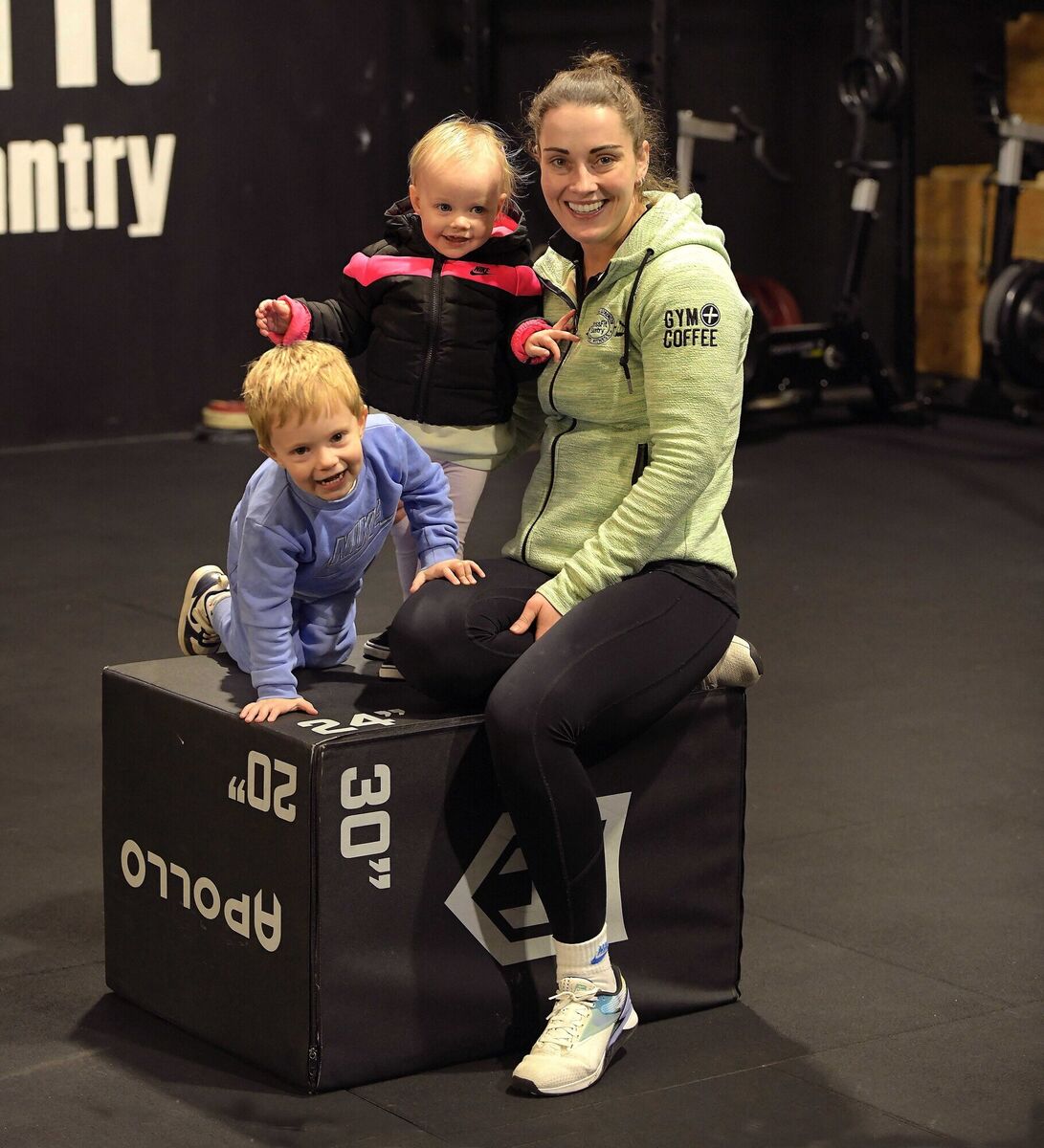
Pelvic health physiotherapist Laura Ward points to two extreme-end views around women returning to physical training/sport after having a baby. On one side, the media portrays as heroic the amateur athletes who return to pitch exercise three-to-six weeks post-delivery. “As a physiotherapist, I’m thinking that’s too much too soon, in terms of tissues healing and recovery from pregnancy and delivery.”
At the other extreme is the view that “it takes six to nine months to heal”. Ward says postpartum exercise has a broad spectrum, from yoga, swimming and walking to CrossFit, running and field sports. “Certain exercises will be more beneficial at certain points in a woman’s recovery.
“It’s about listening to the individual, her goal. Does she want rehab after childbirth that goes up to strengthening, or does she want to run a marathon? The objectives will outline the time it’ll take to get back.”
Ward says evidence shows that exercise during pregnancy — and the more of it — informs how quickly women will return to where they were. “The body has been conditioned through pregnancy, which helps postnatally.”

Meeting women about six weeks post-delivery, Ward establishes the level or amount of exercise during pregnancy, whether the delivery was vaginal or Caesarean, medical interventions during delivery, and recovery in immediate post-childbirth weeks. “I ask how she is right now: How tired, how much rest she’s had, about her nutrition, how she’s coping emotionally.”
Ward’s subsequent physical examination checks abdominal-muscle recovery, pelvic-floor function, and scar-tissue healing and structural healing within soft tissues of the pelvis.
“If everything looks optimum, we promote exercises to mobilise and strengthen; functional movements women need day-to-day. Next, we increase load/weight-bearing exercise and start plyometric training: Landing, jumping and hopping. From here we progress to exercises [demanded] by their sport.”
Pregnancy and childbirth have repercussions on a woman’s body that need rehabilitation, says Ward. “There’s a right way to get women back to exercise. A lot is down to the individual’s objective, to what’s happening with her body at that time. Then we build it back up, slowly and safely.”
In Santry, Baker advises women to train as much as they can during pregnancy. “Your body will be physically stronger for birth. You’ll be physically and mentally sharp to deal with any adversities the postpartum phase throws at you. And find yourself a coach who supports you.”
CONNECT WITH US TODAY
Be the first to know the latest news and updates





